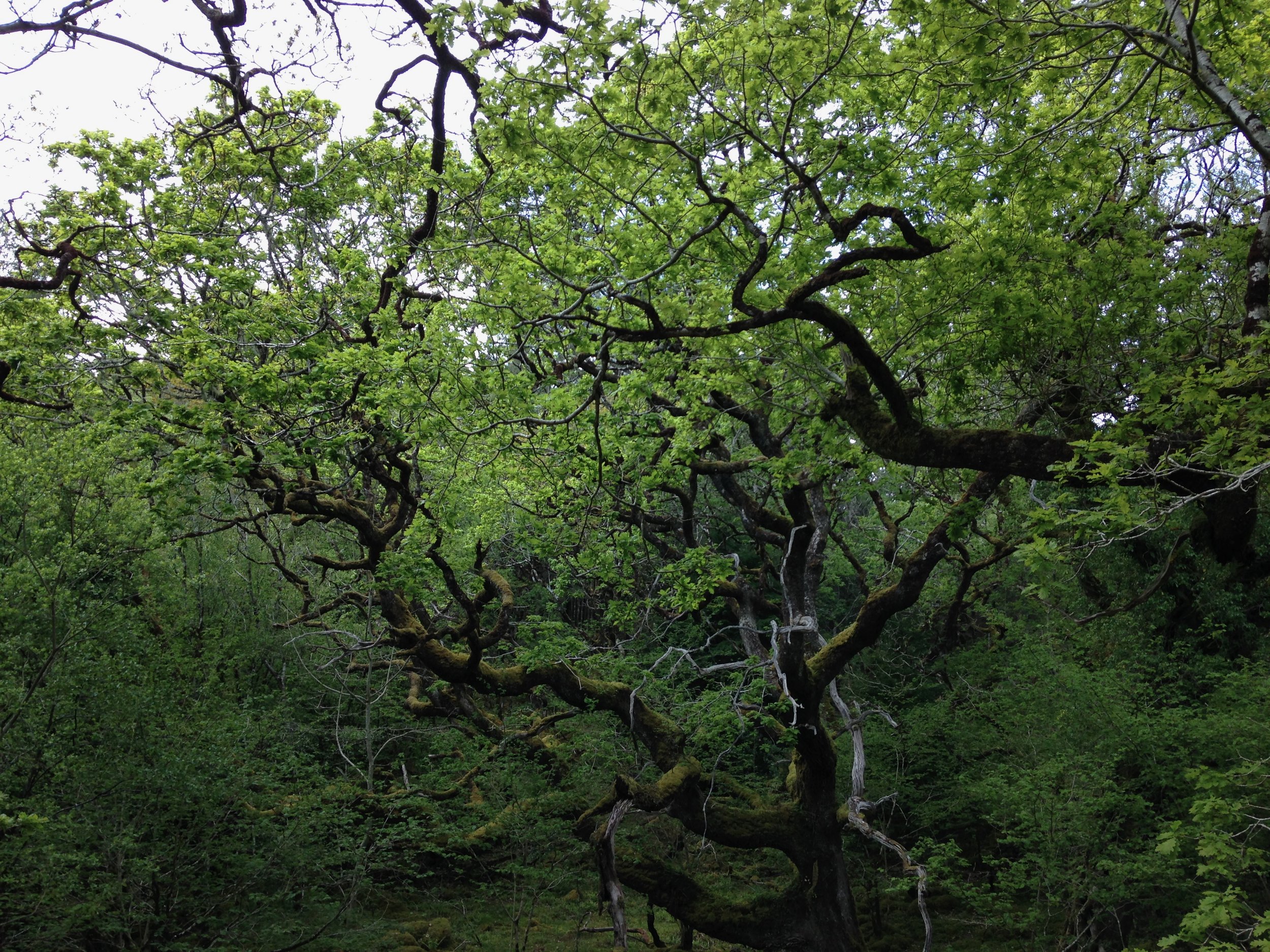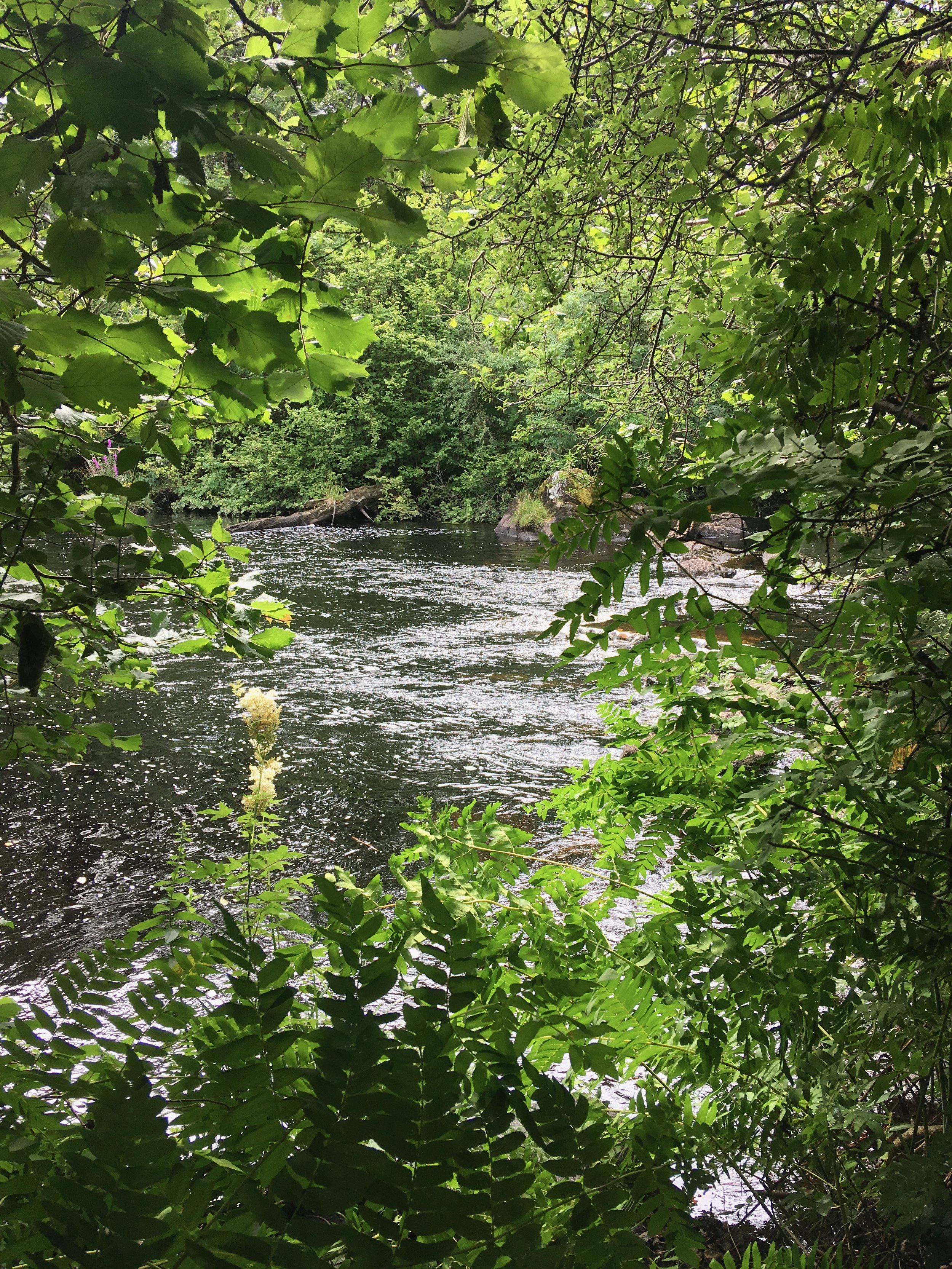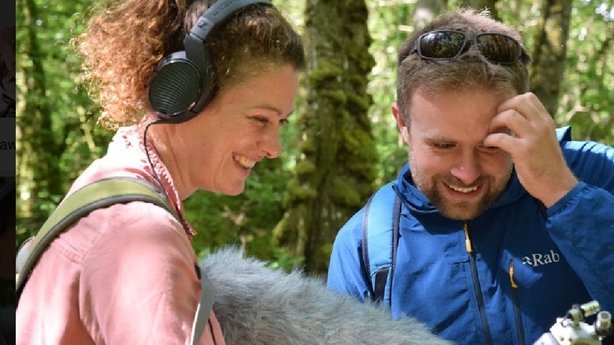In August, myself, Eoin Bannon and Una McMahon went to the Mad Christian music festival in Wicklow to attempt our best Louis Theroux impression for Totally Dublin. Here are the 2,500-ish words, and some of the photos, that resulted.
Words: Eoin Bannon and Lenny Antonelli
Photos: Una McMahon
“I saw myself in the mirror and I looked a bit like Satan, to be honest.” Joe O’Donnell is describing the moment 28 years ago when he found God. “I was drinking in a pub in Coolock – Campion’s it was – and I went into the toilet and looked in the mirror. A twelve by twelve inch mirror. I got a fright from what I saw. Looked old. My face looked rough and my eyes were red.”
The 65-year-old alcoholic describes a drinker’s typical moment of clarity, but for O’Donnell it coincided with an intervention from God. “Around that same time, my wife was ready to leave me. She’d had enough of my drinking. But a voice told her – not a voice she could hear but something in her head – that she should have the strength to stay with me.”
“Within a few days of that I had that experience in the pub, and the next two days I went to mass and didn’t drink.”
The Donnycarney native has been to mass virtually every morning since. He now sings with the Revival Gospel Choir – a multi-denominational group that performs at religious services in Arklow, Co Wicklow, where Joe lives.
The choir is performing at Mad – Make a Difference – a Christian rock and music festival held in the rolling wooded countryside not far from Wicklow town. Now in its third year, the festival was the brainchild of the late agricultural entrepreneur Tim Phillips, once the driving force behind poultry firm Ballyfree Farms.
Tim’s father David left the UK for Wicklow in the early 1950s after selling his patent for the ziplock, a technology still used for sealing plastic. Tim was a keen aviator who hosted air rallies in Wicklow and even raced his own plane. In 1979 he and Goal's John O'Shea persuaded Air Lingus to lend them a fully-crewed plane to drop aid into Cambodia after the overthrow of the Khmer Rouge.
The Mad website says that in the summer of 2006, Tim "repeatedly had a vision of a huge Christian music festival" on the family land, and aimed at young people. His vision "suddenly burst into life" in the spring of 2008 at a meeting in the family home, and the first Mad was held ten weeks later.
Tim died this year at the age of 71 – his daughter Scarlett Tice now runs the festival. She says her father always dreamed big: "Maybe next year we'll have Bono come and kick us off on a Saturday. You might laugh but my father never took no for an answer. Who knows?"
From a distance Mad resembles any small Irish music festival. The focus of the site is a large big top — It’s never more than half-full, but that leaves room for punters to relax or pray on mats around the edge.
The big top is a slick operation, with carefully-chosen graphics on jumbo screens either side of the stage accompanying each song. There’s even room in the budget for a jib, recording footage from impressive angles as it swoops over the stage and crowd.
As well as the big top there’s a children's play area, a second tent for smaller acts, and various stalls — there's the online "music-driven" radio station Spirit FM (coming to the airwaves soon), a "Prayer Pod" where festival-goers can pray with volunteers, a book stall, a table selling God-themed school stationary, various food stalls – including Eddie Rockets – and a tent selling band merchandise.
And the bands are centre of attention. LZ7 are the headline act – their slick mix of pop, dance, and hip-hop thrills the God-loving teenyboppers. The Manchester group’s songs exhort the crowd to love Jesus, hate racism, and transform their lives for the good. Their dance-pop re-working of the first holy communion staple This Little Light gets the crowd jumping, but it’s their I Gotta Feeling / Bonkers mash-up that really raises the roof. They skip the Black Eyed Peas’ lines telling a girl to “just take it off”, but the juxtaposition in the mind of the band’s Christian message with Fergie wiggling her ass is unavoidable.
Other acts are in the folk-rock vein we expect of contemporary Christian music. The Rend Collective Experiment, from Bangor in Co Down, sound and look like many acts that grace the 2FM/Hot Press stage at Oxegen, and they’re popular with the young crowd. London “praise band” Worship Central’s exalting-but-bland lyrics roll on the screens as they play, encouraging the crowd to sing along as they bow heads and raise hands towards their God. Electric Picnic regulars the Dublin Gospel Choir add their hymns to the mix too.
MODERN Christian music was partially born in the hippy counterculture of the late 1960s. As the era of free love came to an end, the Jesus Movement blossomed as some hippies swapped the fuzzy spirituality of the peace movement for full devotion to Jesus Christ.
One of the most influential of these “Jesus freaks” was Lonnie Frisbee, who found God on acid and converted to Christianity in San Francisco. Frisbee teamed up with a pastor named Chuck Smith, and the two started a youth ministry at Smith’s Calvary Chapel converting hippies and street musicians and putting music at the heart of their ministry, which turned out to be hugely influential in the genre.
By then the Californian garage-rock band The Crusaders had released Make a Joyful Noise With Drums and Guitars — perhaps Christian rock’s first major album — and Larry Norman had released his first record. Hailed as the father of Christian rock, Norman challenged more conservative believers who saw rock music as anti-Christian. His struggle was neatly summarised in his song Why Should the Devil Have All the Good Music?
For many the genre means bland soft-rock and cheesy lyrics – and on the evidence from Mad, the stereotype rings true. But its themes have spilled into the mainstream. A few people we meet at Mad claim U2 for the genre. In 1981, just before the release of October, the band headlined the Greenbelt festival of “arts, faith and justice” in England.
In the noughties Christian music continued to grow internationally. In 2004, Nielsen SoundScan reported that Christian and gospel music sales had exceeded those for classical, latin, and jazz. But in Ireland the scene is still small.
"It's a nice little community of bands and worship leaders and musicians," Steve Evans, guitarist with Worship Central, says of the UK and Ireland scene. With his long hair, beard and chilled demeanour, he could have stepped straight out of the Jesus Movement.
Steve plays with non-Christian bands too, and while that might mean toning down overtly Christian lyrics, he sees it as a chance to influence."You get to kind of shine in a dark place," he says.
He says he's comfortable with the drink and drugs of a typical club — but he’s not convincing. "As long as you're secure in who you believe in and how you feel about those things it's kind of like...it is awkward” – he laughs – “but it's doable."
Steve describes performing to a Christian audience as “leading worship”, a phrase we hear throughout the day. "Worship is expressing oneself throughout whatever creative means you may have," he says. "Even performing, I would see it as worship because that's where it comes form in my heart."
THE DIVERSITY of people at Mad is striking: there’s trendy twenty-somethings who could have been dropped in straight from Electric Picnic, teenyboppers dashing to catch their favourite bands, and lots of kids running around who probably think they’ve been taken to a strange funfair with no rides. But there’s more than just young people here: there’s African men in immaculate suits, waistcoats and polished shoes — and their wives with elaborate hairdos, in bright purple and green dresses. Then there’s middle aged men walking about leisurely in panama hats, guys with mohawks covered in tattoos, and quite a few punters who resemble American tourists. And then there’s the bikers.
With his thick beard, stocky frame and leather waistcoat, Mickey Walker wouldn't look out of place at a Hell's Angels rally — until you read the insignia on his back: 'Riding for the son — Christian Motorcyclists Association. The badge on his chest just says, 'Hard Core Jesus Freak'.
The CMA preaches the word to the biker community in 18 countries. "Our bikes allow us into the biker community and the biker community respect us and they invite us in," says fellow CMA member Pat Brown. But he qualifies this: "Some of them do, some of them don't."
Pat and Mickey both ride Harleys. "Bikers have kind of a rough edge," Mickey says. "Part of the community is definitely their fist-in-the-face type of thing. They call themselves the one percenters. So just because of the mutual interest in bikes they'll often let their guard down a little bit."
The group hand out 'Biker Bibles' and literature at rallies. They hand us one of their pamphlets — titled The Grand Finale, it's the story of a biker who tries a wheelie to impress a crowd only to realise he's forgotten to remove his front disc lock. It continues: "What goes up must come down and he went from a wheelie, to a steppie, to a swan dive to a headstand, to a broken neck to a lifeless corpse in a matter of seconds." It warns most people die suddenly and with no chance to say goodbye to loved ones, or to prepare for "what comes next". "If you want him to be there for you on that day, you need to make things right with him today," it concludes.
Mickey's had a few of his own brushes with death on his bike. "You remember yourself flying through the air and landing on your head on the other side of a car," he says. "I'm living testimony that biking is in the blood. You lay the ground and the ambulance is coming, and for about five minutes you're thinking, 'Oh, I gotta give this up'. And then as soon as you realise you're gonna live, you start worrying about the bike."
THE CROWD at Mad might be diverse, but the festival openly targeted at youth. Scarlett Tice says her father's aim was to provide hope — and even just something to do — to young people. "Go down to Arklow or Wicklow or Greystones on a Saturday night — there's nowhere, there's nothing [for young people]," she says. "And now more than ever in this recession, even if you go to university you're not going to get a job. It's just empty, it's hollow.”
When she talks about offering teenagers something to do, she's probably thinking differently to the average 17-year-old. "I've got three teenage children. I wouldn't pack them off to Oxegen for a few days — goodness knows what might happen to them," she says. "Fortunately they don't want to go."
She says faith plays a big role in the lives of her kids, and that while they're not angels, their faith means they have little reason to take drugs, get drunk or sleep around.
"If kids all grew up with some moral values, I mean this place would be better wouldn't it? It has to be,” she says. “We’ve just got chaos out there. We’ve got so many broken homes, so many broken families, so many broken everything. I think that going back to the basics and having core Christian values will absolutely impact our country, no question.”
BUT WHAT do the kids think? We meet Emily Stewart 17, and Owen O'Neill, 16, chatting on bales of hay near the big top. It's their third year at Mad — they're enjoying it but say something's missing this year, though they can't pinpoint it.
They say being Christian during adolescence is tough. "At my age it's when everyone is starting to get into the whole drinking scene, and it's difficult to try and seriously stop yourself," Emily says. But being Christian makes her stronger in those situations too, she adds.
What about sex? Have the chastity rings of evangelical teens in the US made their way to Irish shores? Mercifully, no."I personally don't think I'm gonna have sex until I'm married," she says. “I don't need a ring to prove it."
Owen says most of his friends don't know about his faith. "Not a lot of people see me as a Christian, they just think of me as Owen," he says. But he's worried his friendships could hold back his Christianity. "They kind of see you as something different if they see you Christian and holy."
Emily says one of her best friends is gay — she hasn't made up her mind whether homosexuality is a sin, or whether it's nature or nurture, but says she's "totally fine with it”. “If they're Christian and they love God and they're true to that and they're gay, what's so wrong with that?"
If Totally Dublin came to Mad expecting to find a deliriously happy and fanatic type of Christianity, most young people here seem the opposite: intelligent, thoughtful and fairly open-minded. Alex Delap, 24, embodies this – a fresh-faced aspiring filmmaker, he’s working in the cafe tent, making coffee and serving brownies. Money raised at the stall goes to a charity that offers support to young people in Ibiza — which includes "running a van to go around the town, taking people [home] who are OD'd on ket or whatever,” he says. A big dance music fan, he’s been over to volunteer.
Throughout our chat he emphasises that Christians shouldn't act as moral judges, and shouldn't aggressively evangelize — he says preaching to others would feel as unnatural to him as talking about his faith with a magazine, which he admits to being a little uncomfortable with.
He reckons churches must revive the sense of community he feels Ireland has lost — regardless of whether those they serve are Christian. "I think that's where God is played out, in people looking out for each other and caring for each other."
He also finds the idea of an insular Christian sub-culture "nasty". "To me being a Christian just means I want to be like Jesus. I loved his way of life, I love a generous way of living,” he says.
To an extent Alex and his cohorts proved us wrong: Totally Dublin went to Mad with its prejudices about Christian music, and while these were largely confirmed by the big top performances, there wasn’t much of the happy-clappy, insular, judgmental sub-culture we expected.
Perhaps sensing our preconceptions, Scarlett – the organiser of this whole jamboree – moves to dispel any myths as we chat. “We’re not weird!” she laughs. “We’re not a cult! We’re not weird!”





